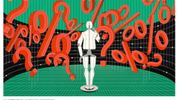That is 500,000 jobs linked to the manufacture of internal combustion engine (ICE) vehicles. There will be 226,000 new jobs created in the manufacturing of electric parts and vehicles , reducing the net number of job losses to approximately 275,000 over the next couple of decades.
Volkswagen is intent on become a software and data company in the same way that Tesla already is. All auto OEMS have to manufacture vehicles of course but with far fewer parts, new vehicle technology stacks generating data on vehicle and driver behaviour software, IoT over the cloud and AI become kings, today's core strengths are no longer tomorrow's competitive advantage.
It was predicted that Elon Musk and Tesla would not achieve high volume capabilities and would suffer the agony of bankruptcy or sale. Tesla has cracked that issue and meanwhile drives far ahead in vehicle technology stack design and leveraging the data from the millions of miles covered by its vehicle parc.
To constantly improve vehicles, make repair more efficient and less costly ( and auto claims) , to allow more accurate and granular underwriting, Traditional ICE jobs being replaced by new electric vehicle (EV) and autonomous vehicle (AV) jobs. Not just across auto OEMS but at vehicle platform providers, repair networks, insurers and brokers.
The rising prices of petrol and diesel for internal combustion engine (ICE) autos has reportedly increased the demand for electric vehicles.Repairing these is a different matter than for ICE vehicles. The Battery represents 30% of the value of the vehicle and requires specialist equipment and training to repair. The ICE vehicle power train comprises around 2,000 components rather than the 20 or so of an EV. Many repairs and upgrades of EVs can be delivered over IP with software updates.
Fewer moving parts mean less wear and tear, there will be no oil or spark plug changes and servicing revenues will fall by around 40% according to McKinsey. At the same time GM has reportedly told its dealerships they will each have to invest circa $200k in new equipment and training at the same time as revenues and dealership visits drop. As vehicle technology advances beyond ADAS level two the connected vehicle, telematics data from the EV technology stack will fuel predictive maintenance analytics and even automatic booking of vehicles into workshops when necessary.
Technological disruption like this does, though, provide an opportunity for new entrants. Elon Musk, after all, was an industry outsider when he set up Tesla, his (for now) Californian carmaker, which launched its first EV, the Roadster, in 2008. Already there are signs that companies from other areas are looking to enter the EV-servicing business.
"After buying a Roadster, Pete Gruber started repairing them in 2013. His company, Gruber Motor, based in Phoenix, Arizona, has grown into an independent Tesla service centre. The firm has developed its own tools and test equipment to repair the individual components in the electronics and batteries of Tesla cars. This is possible, says Mr Gruber, because he has also had more than 30 years experience running a company that repairs high-voltage power systems in data centres, meaning the technology was familiar."
The Economist 23rd October 2021
Auto OEMs moving into insurance, new entrants into the EV repair business and the slow but steady move to autonomous vehicles with even more software innovation. Combine this with the evolution of digital auto claims platforms and "touchless claims" by the likes of Verisk, LexisNexis, CCC, Mitchell, Audatex, Tractable and combinations of these with insurtechs and the traditional ICE repairer will become a specialist serving s reducing parc of ICE vehicles particularly after 2030.
Motor insurers need to factor this into strategy and planning whether it be embedded insurance at point of sale and lease, the validation, triage and estimating of damage, total loss or repair, and supply chain management. The upskilling and technology support of claims adjusters before the exodus of retiring adjusters makes this a critical issue.
You cannot relay on AI and data alone to manage claims- especially more serious ones. The current 2021 LexisNexis Future of Claims report make this clear. Virtual, touchless claims are attractive to insurers which rarely make underwriting profits in this cut-throat market. But humans wan a mix of virtual and human engagement.
Technology can help deal with predictable outcomes but not the unpredictable complexities when third party liability is involved, personal injury and recoveries. Train new claims adjuster whilst you can and augment them with technology.
All the time the different parties involved are planning how to monetise the data generated by ICE vehicles as advanced driver assistance systems evolve and are deployed, the proportion of EVs increases and AVs continue on the path to becoming commonplace.
- Auto OEMs from the giants like GM, Toyota, VW, Daimler and PSA to minnows like Rivian
- Auto platform companies like Bosch
- Telematics vendors like
- Data and AI companies like Tractable
- Insurers and reinsurers
These are important trends to drive vision, strategy and business execution.
arlos Tavares, chief executive of Stellantis, told a Reuters conference on Wednesday that the speed of the transition to electric cars was “putting the industry on the limits”, adding that the costs of developing the new technology could lead to heavy job losses.
https://www.ft.com/content/1e0040c9-aab2-4881-828b-e992f23a9f3e









